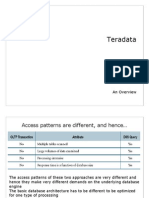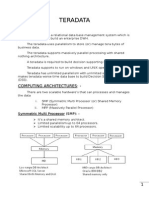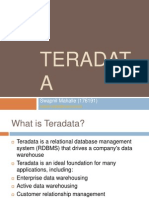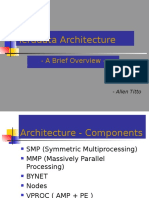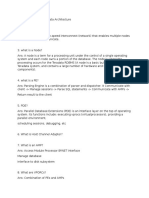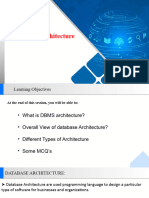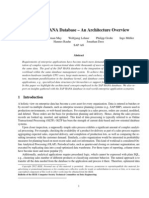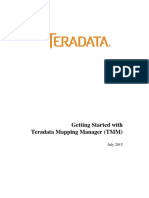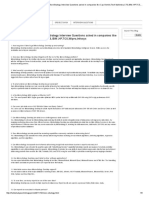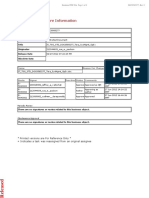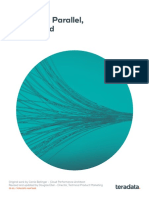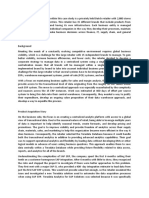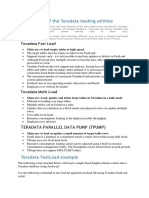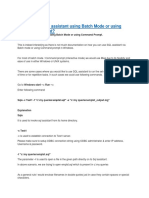0% found this document useful (0 votes)
107 views3 pagesTeradata Architecture
The Teradata architecture is based on massively parallel processing. It uses parsing engines to prepare query execution plans and send them to Access Module Processors (AMPs) via the BYNET messaging layer. AMPs store and retrieve data from disks in parallel and return results to the parsing engine. Nodes contain operating systems, CPUs, memory, and disks and work together across this architecture to process queries and retrieve data for clients in a distributed manner.
Uploaded by
anjani kammellaCopyright
© © All Rights Reserved
We take content rights seriously. If you suspect this is your content, claim it here.
Available Formats
Download as DOCX, PDF, TXT or read online on Scribd
0% found this document useful (0 votes)
107 views3 pagesTeradata Architecture
The Teradata architecture is based on massively parallel processing. It uses parsing engines to prepare query execution plans and send them to Access Module Processors (AMPs) via the BYNET messaging layer. AMPs store and retrieve data from disks in parallel and return results to the parsing engine. Nodes contain operating systems, CPUs, memory, and disks and work together across this architecture to process queries and retrieve data for clients in a distributed manner.
Uploaded by
anjani kammellaCopyright
© © All Rights Reserved
We take content rights seriously. If you suspect this is your content, claim it here.
Available Formats
Download as DOCX, PDF, TXT or read online on Scribd
/ 3















